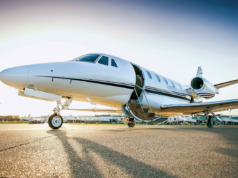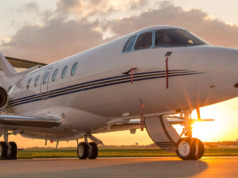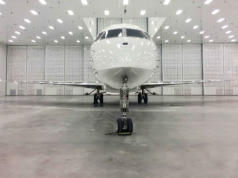Your business activity is on the rise, company officers have floated the idea repeatedly, travel needs and budgets finally align: it’s time to acquire an aircraft. Whether this aircraft is your company’s first, or is an addition or a replacement, you best can prepare by answering six basic questions.
Be Prepared Before You Search
Your business activity is on the rise, company officers have floated the idea repeatedly, travel needs and budgets finally align: it’s time to acquire an aircraft. Whether this aircraft is your company’s first, or is an addition or a replacement, you best can prepare by answering six basic questions.
WHO? Assemble the right people by including company representatives from each area that will be involved with the aircraft. The team also should include applicable outside advisors such as an aviation/technical consultant; aviation legal counsel; accountants and Federal, state, and local tax advisors; financial advisors and institutions; “like-kind” exchange company; insurance broker; and title/escrow company. For a foreign registered aircraft, also consider including international advisors for issues such as change of registry, export/import, title, and tax. While you may not need all these individuals, do consider all areas so your team can address the pertinent issues.
WHAT? What structure will you use to own the aircraft? Consider your company’s travel requirements: destinations, trip distance, airport capabilities, number of passengers, baggage and cargo needs, and desired aircraft features such as avionics and amenities. As you consider your budget, you will analyze both acquisition and ongoing operations costs. Aircraft ownership can take the form of full ownership, leasing, co-ownership, or fractional. Aircraft can be operated on a noncommercial or commercial basis.
Noncommercial operations generally prohibit receiving compensation for carrying passengers or property, with a few narrow exceptions. Commercial operations are conducted by certificated air carriers for compensation and have stricter operational requirements. These considerations should help determine whether to purchase a new or used aircraft, the aircraft make and model, and will help you narrow down the ownership and operating structure options.
WHERE? Where will the aircraft be delivered? Where will it be hangared? Where will it be used regularly? For each location, consider the numerous issues, including: logistics, security, operations, registration, tax, and customs.
WHEN? When does your company need the aircraft? When is the targeted aircraft available? Some new aircraft have backlogs of months or even years. If a used aircraft is desired, consider: Is the potential pool large or small? Is the aircraft available to place into immediate service or does it first require refurbishment? Do financial, tax, or reporting issues dictate timing? For example, both IRC section 1031 “like-kind” exchanges and many states’ trade-in rules have strict timing requirements. Does the pre-arranged financing require some or all transaction(s) be completed within a specified time?
WHY? Why are you acquiring the aircraft: for business or personal use, or both? Which company(ies) has business use? How are those businesses related? Documentation of business purpose is crucial for tax and other purposes. If personal use is permitted — by whom and how much? Is third-party use planned? Your answers will inform the ownership and operating structure, and will have significant corporate governance and reporting, budgetary, personnel, legal, regulatory, risk management, and tax implications.
HOW? How will you set up and implement the selected structure? Generally, in order to register an aircraft in the US, the owner must meet the statutory definition of a “citizen of the United States.” The operational structure must adhere to both FAA and DOT rules. Risk management should consider liability exposure on all levels and within the requirements of all agreements. You also will: arrange and document financing, determine tax positions, set up policies and procedures for ongoing operations, and determine when and how your company will conduct periodic reviews of, and change or update, your plans and procedures.
Ideally, at the end of this planning process, your company will make an offer, contract with the seller, perform the inspection, and close on the acquisition. When you have taken the time and effort to work through all the issues involved in these six essential questions, you can feel more confident that your company will benefit fully from the new aircraft. BAA
Joanne M. Barbera is a founding member of Barbera & Watkins, LLC. Since 1993 she has focused on aviation regulatory and tax matters, with extensive experience in purchasing, sales, leasing, financing, and aircraft management.




